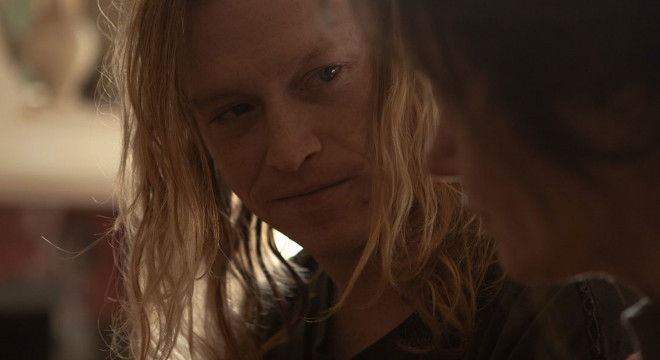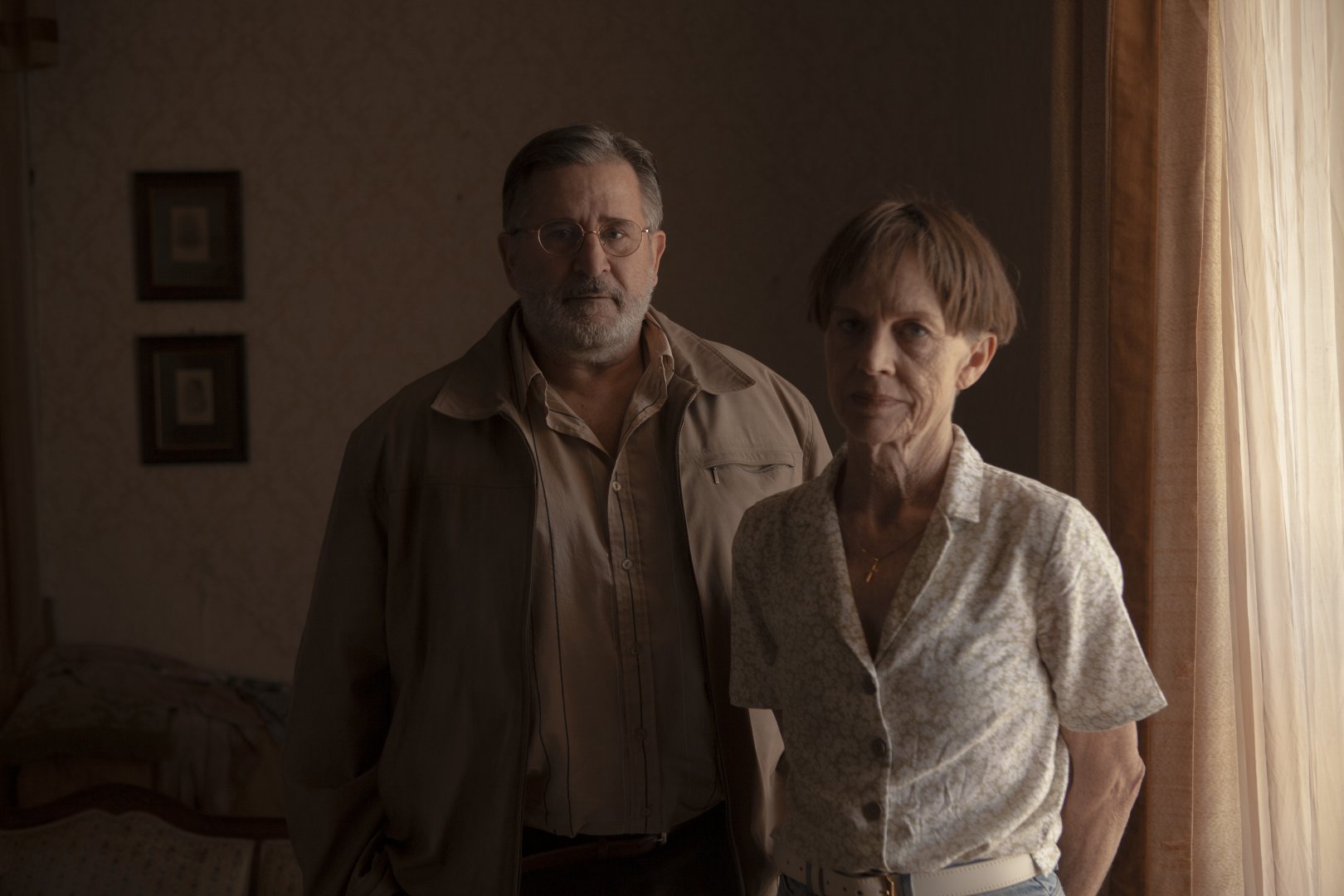Nitram, which tells the story of Martin Bryant, perpetrator of the Port Arthur massacre, was filmed in Geelong, Victoria, rather than in Tasmania where the horrific events took place – a decision which director Justin Kurzel says he took out of respect to survivors and victims of Bryant, and to the Tasmanian community as a whole. And Nitram seems desperate to avoid any perception that it is in any way exploiting the events of Port Arthur to excite prurient interest – in foreign audiences, say.
There is a scene in a gun shop that shows, yes, guns were far too easy to purchase in Australia before the Port Arthur massacre and the reforms which it precipitated. And at the end of the movie, title cards announce that compliance with the National Firearms Agreement is patchy, and there are now more guns in Australia than there were at the time of the massacre. But Nitram isn’t about gun control; and although it may not be exploitative in the crudest sense, every element of its approach reveals, at best, a remarkable lack of intellectual and artistic sensitivity.
Nitram naturally bears comparison with Kurzel’s debut film, Snowtown. Snowtown was a very disturbing, effective film – and much more clearly exploitative in its tone than Nitram. In Snowtown there was, alongside the horrors of the murders, a clear horror of poverty in itself – horror of the depressing meals, the drab interiors, the aimless chain-smoking. As Guy Rundle wrote in a piece on Kurzel’s work (written before the release of Nitram), Snowtown failed to examine the material conditions and failed social policy which effectively provided the murderer John Bunting with such a ready supply of victims and accomplices. Nevertheless, the film unquestionably worked as a piece of psychological horror, even if its techniques leave an unpleasant taste in the mouth.
With Nitram, Kurzel has set himself a more difficult task – to create a meaningful character study of somebody who is not only repellent but personally uninteresting, and to somehow relate that character study in a meaningful way to the senseless events at Port Arthur. The film opens with real archival footage of a young Martin Bryant in the burns unit at hospital – he’s hurt himself playing with fireworks, although as he tells the interviewer, he’ll play with them again. We cut forward to him as an adult – playing with fireworks and deliberately antagonising his screaming neighbour. He lives with his parents. His mother (Judy Davis) is cold and unsympathetic, obviously worn down to nothing by the difficulty of raising Martin. His father (Anthony LaPaglia) is loving and indulgent, but prone to depression which worsens drastically after he is outbid for a bed and breakfast he was hoping to purchase as a fresh start for the family.
Caleb Landry Jones does give an excellent performance as Bryant. The only time the pain and bafflement in his eyes lifts momentarily is when he is engaging in dangerous behaviour which lies in a grey area between immaturity and nihilism – such as when he plays around in the car driven by his only friend, Helen, by grabbing the wheel to steer them into oncoming traffic. His relationship with Helen is very well-drawn, and Essie Davis plays her very well. They’re brought together purely by loneliness, and although their relationship seems non-sexual, it’s not totally unromantic either. The soundtrack also is superb – haunting and otherworldly, rather than ominous.
But strong performances and restrained, naturalistic dialogue can only carry a character study like Nitram so far. Much like Snowtown, Nitram is monotonal – the only emotion it seeks to evoke is a sense of ambient dread. Owing to his limitations, Bryant is not capable of any kind of interaction which might draw out his character or allow him to communicate anything of his inner life. Instead, the film relies on predictable motifs – Bryant staring into a mirror, Bryant shooting mindlessly – to convey his vapid interiority.
This might well be an accurate depiction of Bryant as an individual – but with such a paucity of material for a character study, the question arises of what this film is actually trying to achieve. The film is, ultimately, not really about the Port Arthur massacre, which functions merely as an ominous finale to languish towards. The massacre itself is not actually depicted, with the film ending at the moment Bryant takes his rifle out of his bag.
This struck me as a cop-out. If you wish to make a film about the horrors of Port Arthur, surely you have an obligation to actually depict them. If you don’t wish to depict them – if you think an audience wouldn’t be able to stomach such a depiction, or you can’t stomach it yourself – perhaps you have chosen the wrong subject matter. It may be that this decision was made (like the decision to film in a different state) out of respect to the victims – but does it really show them respect to make a film which focuses exclusively on their murderer, and elides them altogether?
The problem with Nitram is that the world does not seem to exist outside its protagonist. There is no interest shown, for instance, in the fact that before Port Arthur was a tourist attraction it hosted unbelievable suffering as a penal colony – even though Bryant himself mentioned when interviewed that this was partly the reason he chose it as his target. For nearly two hours Nitram circles the void at its core, accomplishing nothing, telling us nothing.
Nitram is currently streaming on Stan.



